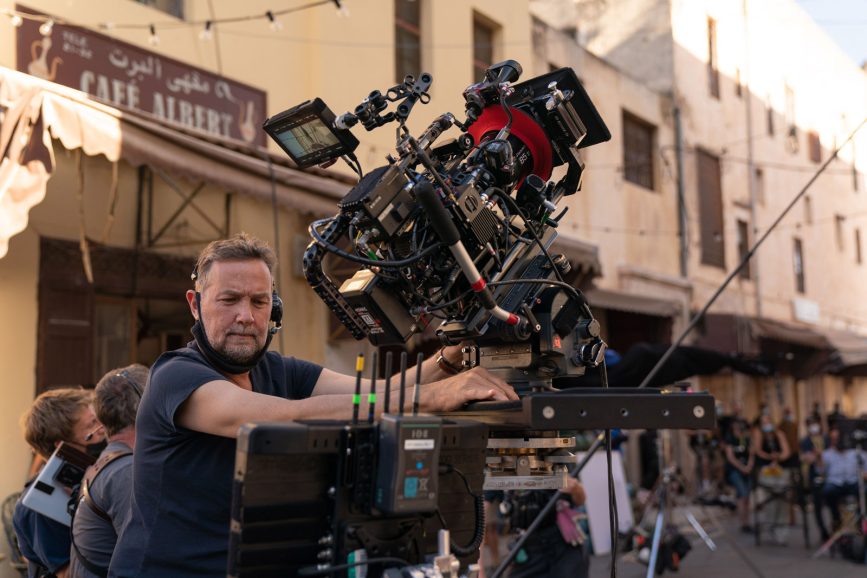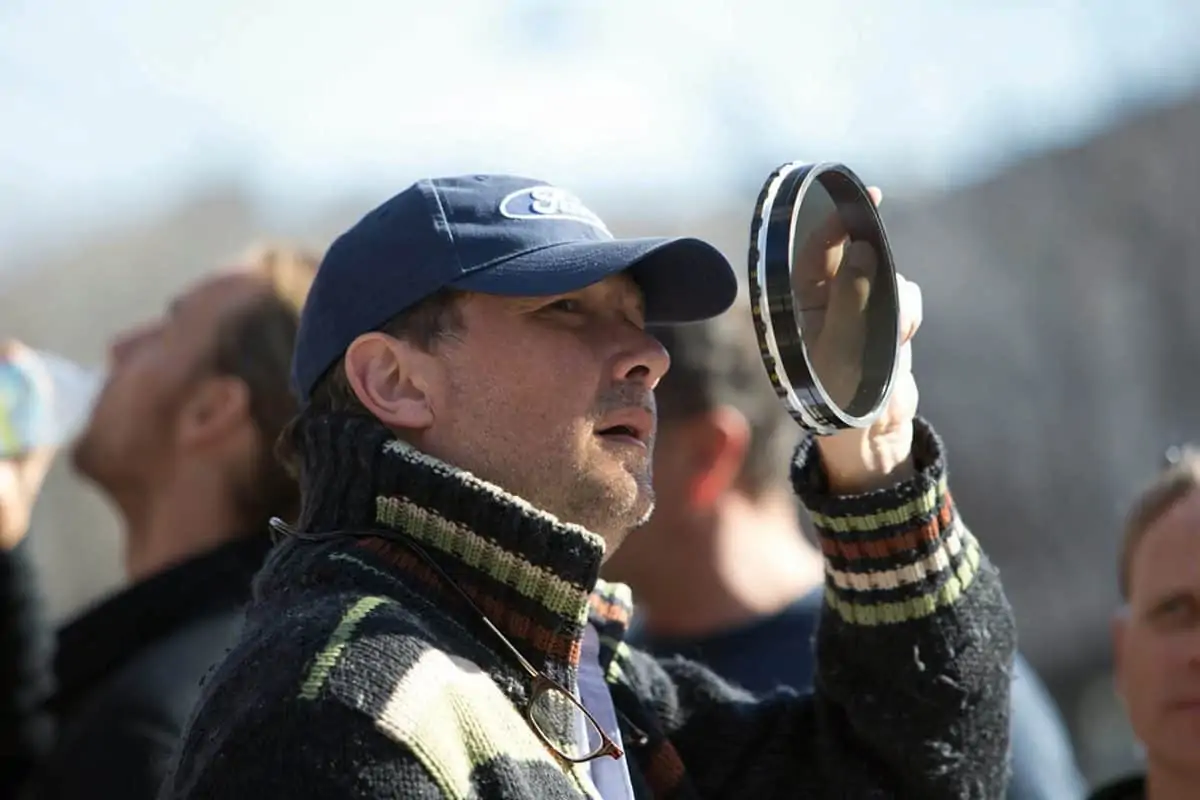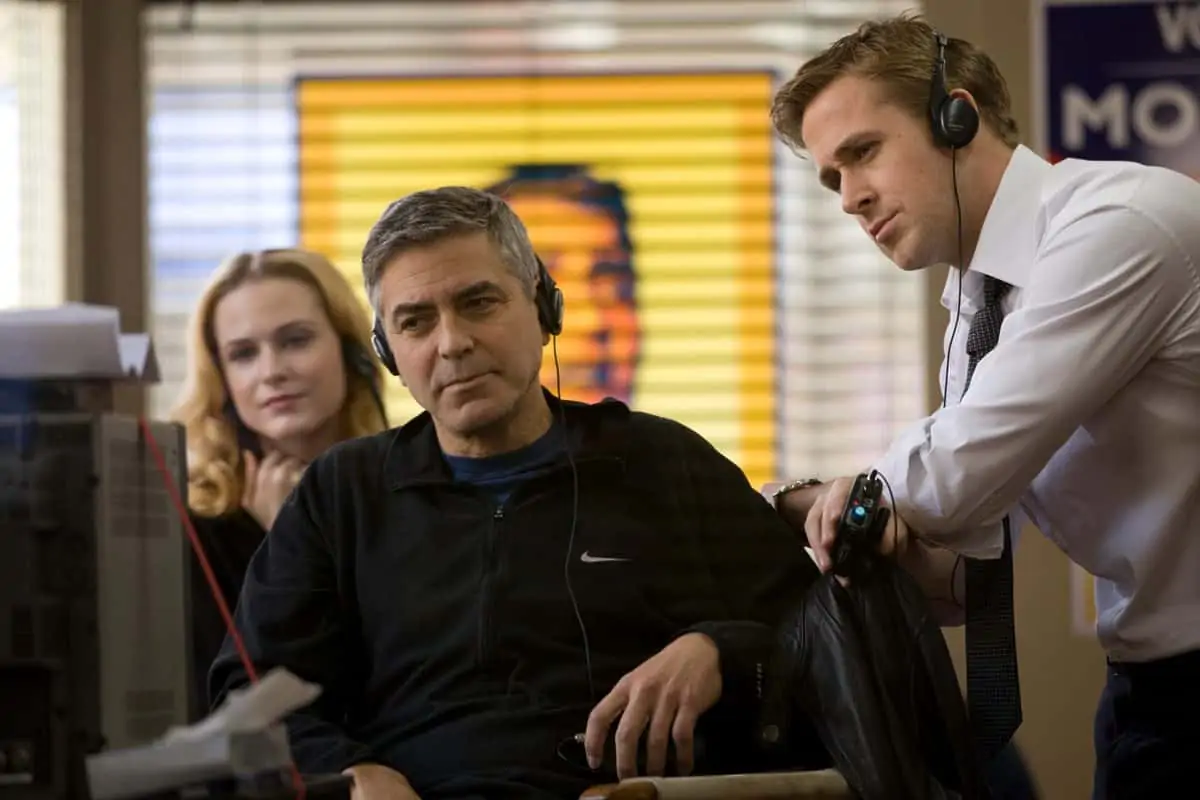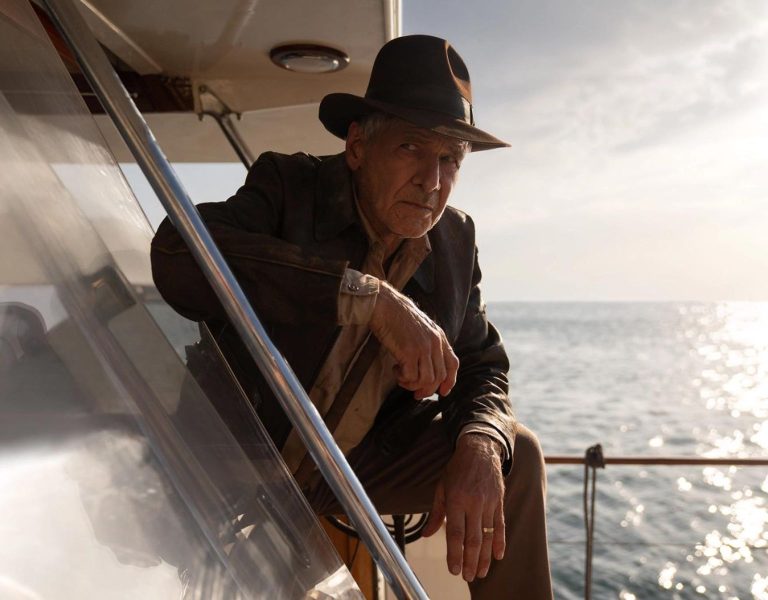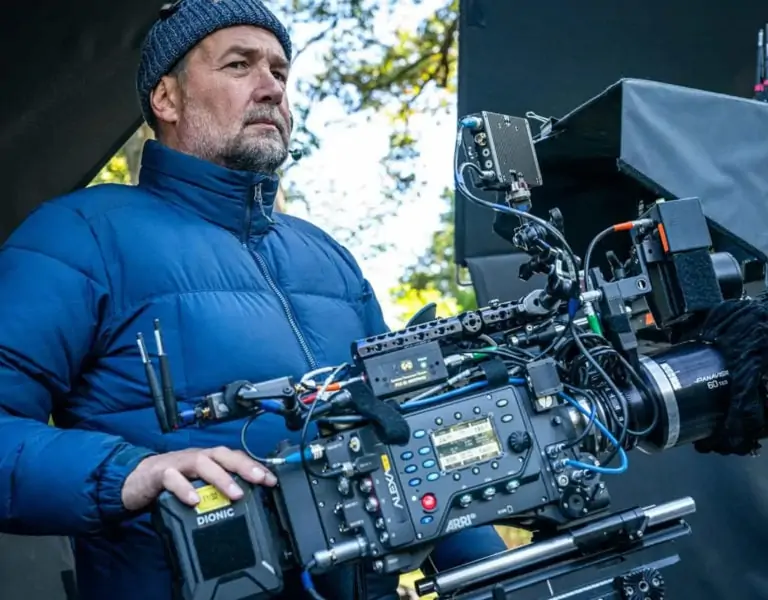DIALLING UP THE THRILLS
As Phedon Papamichael ASC GSC becomes the latest cinematographer to lens a rip-roaring Indiana Jones romp, he and director James Mangold reveal the privileges and challenges of bringing Harrison Ford’s adventure-fuelled archaeologist to the screen.
Getting the opportunity to roll the boulder of mayhem bearing down on a swashbuckling archaeologist is filmmaker James Mangold, who takes over directorial duties from Steven Spielberg to create the fifth installment of an iconic franchise envisioned by George Lucas. The events of World War II resurface again during the Space Race of the 1960s, when retiring professor Dr. Henry Jones Jr. (Harrison Ford) and his goddaughter (Phoebe Waller-Bridge) come into conflict with a former Nazi working for NASA in Indiana Jones and the Dial of Destiny.
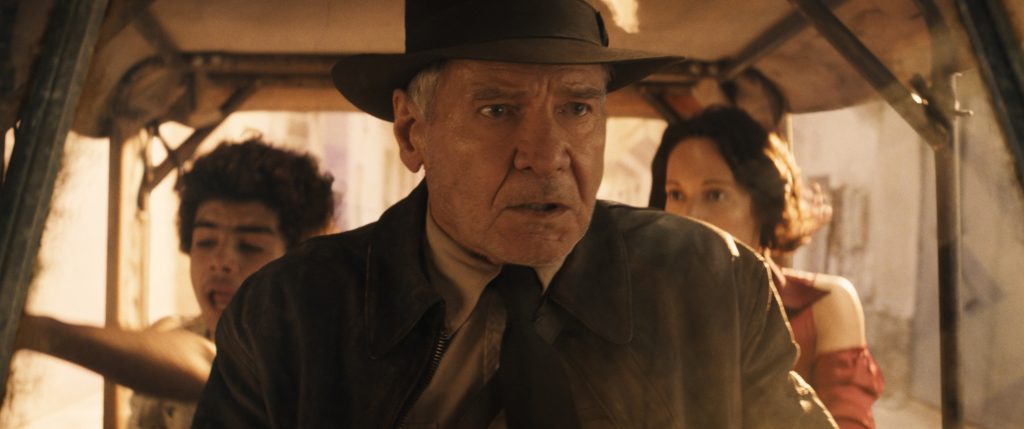
“I think my role as a writer and director is all about the orchestration of units of narrative,” explains Mangold. “First the screenplay, units of story. Then after the process of rehearsals, scouting and set design, the blocking of the camera and the actors, units of composition and movement [the cinematography]. All these choices I make are guided by the breakdown of shots which I imagine I will need for the editing patterns I have planned. The photography of the film is when I make these scraps of paper and dreams into something tangible. It is also the time that I react to the light and performances and the actors’ behaviour and faces. Phedon Papamichael ASC GSC has always been a wonderful partner in this exploration; he helps me try to get what I envisioned but also often awakens me to possibilities I haven’t considered.”
Papamichael follows in the footsteps of cinematographers Douglas Slocombe OBE BSC ASC GBCT and Janusz Kamiński. “I talked to my friend Janusz Kamiński who did the last one, Indiana Jones and the Kingdom of the Crystal Skull, and he said before I embarked on this, ‘That was the hardest movie I’ve ever had to do,’” recalls Papamichael. “It is hard and a lot of work because dialogue and humour are constantly being delivered in the middle of all this action.”
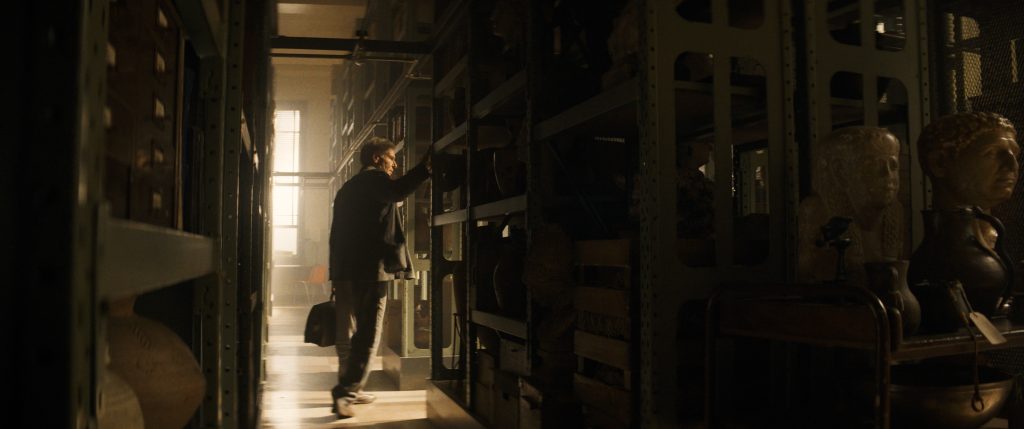
A certain aesthetic had to be maintained. “The lighting of Douglas Slocombe is more stylised than my normal work. But even in this case, I always try to apply my instincts of a light that is motivated and makes sense while also embracing these elements of beams and sunrays, and using more atmosphere than I normally do.”
A conscious effort was made to honour the past while bringing something of his own to the franchise. “We were obviously influenced by Dougie Slocombe’s work with Steven on the first three films,” remarks Mangold. “But we also have our own style of composition and the use of the widescreen frame. The truth is that the two of us happily live in a widescreen cinematic world that is very adjacent to the style Steven often occupies. We love wider lenses close. I am always pushing us to minimum focus, I love changing screen sizes in a shot, not only through camera movement but also blocking.”
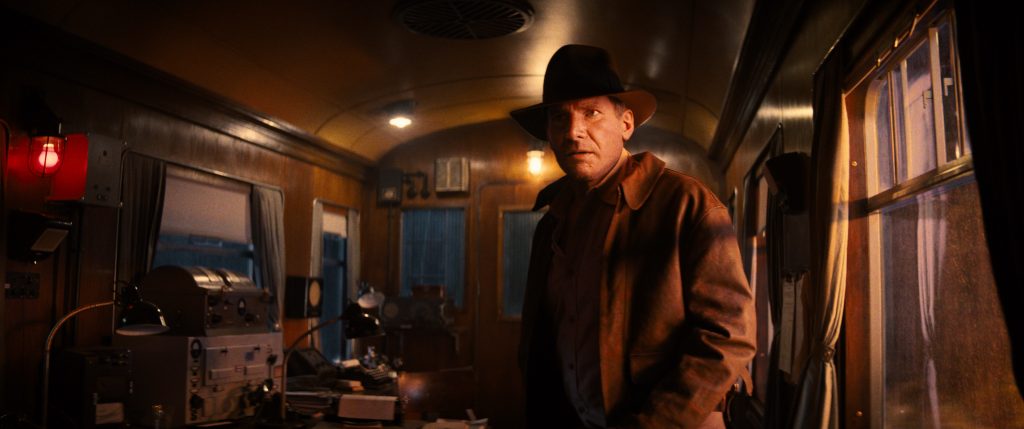
Single success
A single camera mentality was adopted during principal photography that took place in Sicily, Morocco, Scotland and at the 007 Stage at Pinewood Studios in London. “Similar to Spielberg, Mangold and I are strong believers in not randomly covering with multiple cameras,” states Papamichael. “There is always a specific shot or a shot that we design and if we are able to place a second camera in a way that makes sense and is not compromising the A-shot then we will try to place that. There are sequences that are action driven and we are using at least two cameras, sometimes three.”
There was no debate about the aspect ratio. “I fell back to the large format 2.40:1 aspect ratio for which we chose Panavision Anamorphic C and T Series,” states Papamichael. “Mostly T this time because they have a better close focus. It’s basically the same approach we took on Ford v Ferrari because we find it quite cinematic in the way the image falls off, but they also reflect and embrace the original Indy movies which were shot with Panavision C Series.” Wide lenses were favoured. “Even when we shoot closeups we like to shoot it on the 40mm or 50mm because you still get a sense of the environment. The lenses were customised by optical guru Dan Sasaki so they could be expanded to cover the large format. It’s not exactly a 50mm but it’s somewhere in that range. It might be 55mm and then the 40mm is going to be a 47mm.”
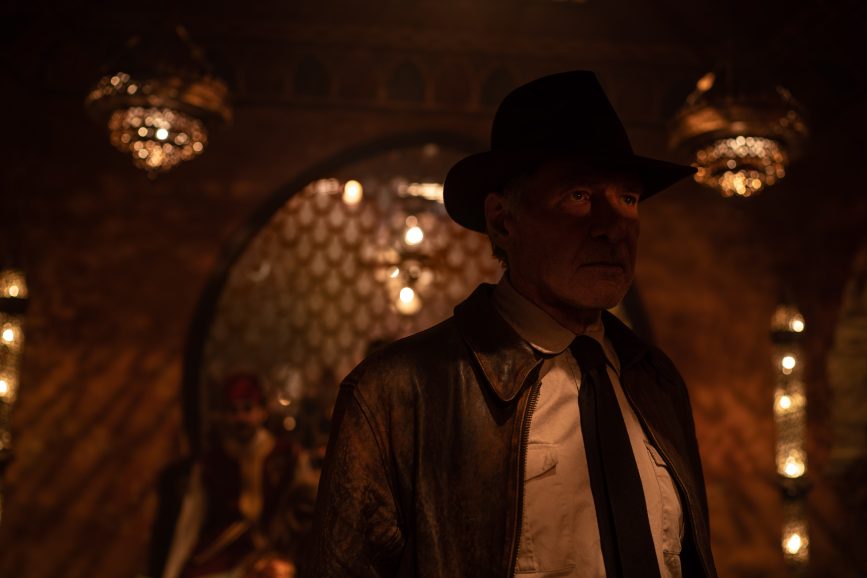
Film grain was added to the imagery shot by the ARRI Alexa LF cameras by colourist Skip Kimball at Company 3, as the previous four installments were not captured digitally. “We didn’t use LiveGrain but rather actual film grain shot on gray and layered on top,” reveals Papamichael. “We can adjust the size by blowing it up or changing the opaqueness.”
Stunts and visual effects had to be taken into account when deciding upon the coverage. “If visual effects or stunts are involved, I come to set with boards I have worked out with an artist or more often I just have a list of the shot units I think I will need for the way I want the cutting pattern of the scene to work,” explains Mangold. “At minimum, I try to think about the last shot of an outgoing scene and the first shot of an incoming scene. To me, the transitional cut is the most creative and interesting cut of all, jumping through time and space. But the planning serves simply as a recipe, and once Phedon and I start cooking we often don’t look back at my lists. We absorb them and then live in the moment with our crew and actors.”
The opening scenes take place during World War II which is the same time period of Raiders of Lost Ark, resulting in 80-year-old Harrison Ford being de-aged to look like when he was 38. “I just shot them as I would any other scene or sequence,” notes Mangold. “Although, of course, I had to be aware of Harrison’s physical performance as he was playing himself as a younger man.” Industrial Light & Magic had plenty of material from the previous four Indy films to reference. “The idea was it was lost footage from when Raiders of the Lost Ark was shot and didn’t make the movie,” remarks Papamichael. “I could shoot in the lighting that I wanted to create because they had so much footage of every possible situation with him from when he was young and were able to draw upon that. We shot with two other reference cameras sometimes attached to the main camera. Please don’t ask me exactly how that works! I tried to ignore it as much as possible and to shoot the way I would shoot. The great advantage is that we were actually shooting Harrison.”
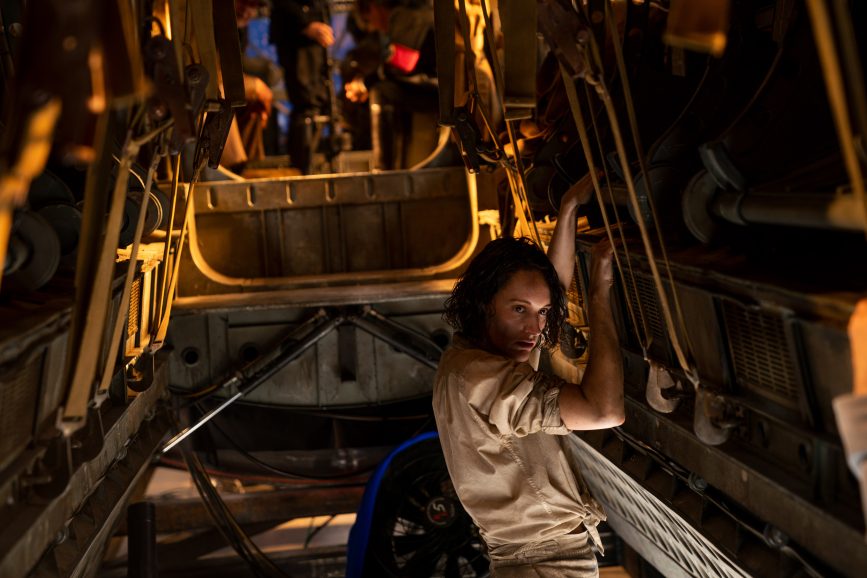
Lighting looks
So not to disrupt the performances, the lighting setups had to be nonintrusive. “Once I feel like I’ve established a mood for, let’s say, the lecture hall where Indy is a professor, we’re able to maneuver between setups quite quickly,” observes Papamichael. “I was certainly using numerous LED lights and was operating a lot with this wireless remote called DMX-IT which is a mobile 12 channel board for lighting. My gaffer David Sinfield and I worked out a system where, for example, all of the 360 SkyPanels could be programmed on channel seven. I gave the second DMX-IT to David. We have a sequence where the plane takes off in a a storm at night. While the plane is taxiing on the ground, I would give him the runway lights and I would control the lightning and other changing light effects.”
Some of the environments were quite physically constrictive. “I had a lot of Astera tubes and smaller LED light units that were handheld by electricians assigned a particular position to be in and move with a certain actor. It all becomes like a big intricate dance with electricians walking with lights and me controlling the levels from my DIT tent. We all communicated on this HME system. I still use stronger light sources like Maxi Brutes or T12 big tungsten sources to create beams and to fill up the space.”
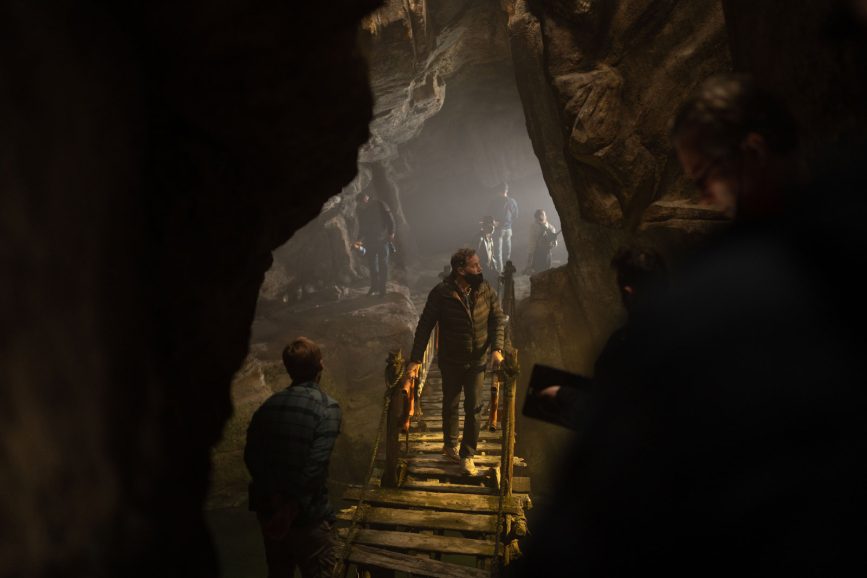
When asked what was the most complex shot to execute, Mangold confesses, “I suspect my answer to this question will inevitably be unsexy to you. The most elaborate shots are not the most difficult. It is the synthesis of performance, movement, and nailing this relationship. Phedon and I are very sensitive to getting the subtle shots right and often we will use a long slider mounted on the dolly to allow him to feel his way through a delicate shot. The shot that introduces Teddy [the child who accompanies Indy and Helena in the adventure] is not obviously complex, but it is a 180 degree move around him while starting as an insert and becoming a medium shot; but the corkscrew move had to be perfectly in sync with Ethann Isidore, our young actor. It was really hard in that it just had to fall in place.”
One of the most difficult scenes for Papamichael was the plane flying through storm. “Because of the hydraulic rig being elevated and the interior space being confining and having the entire cast of Mads Mikkelsen, Harrison, Boyd Holbrook, and Phoebe in this tube. And there is another plane with Teddy, the little kid from Tangier. It’s complex with the turbulence. The plane spirals and goes into a spin dive. Then having to do all of the onstage interactive light at the right timing.”
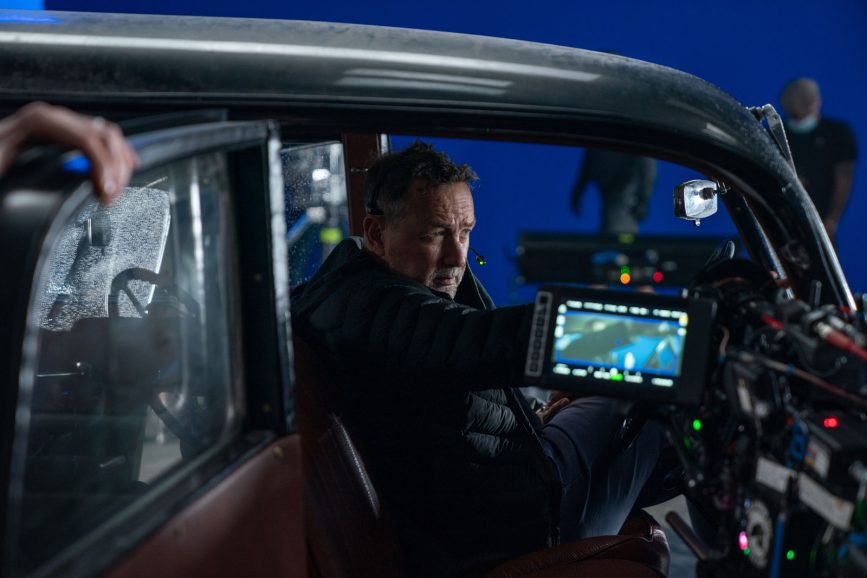
Key crew members were 1st AC camera operator Olly Tellett, gaffer David Sinfield, A-camera operator/Steadicam Julian Morson, B-camera operator/Steadicam Stamos Triantafyllos, key grip David Appleby, 2nd unit DP Patrick Loungway, additional cinematographer Cory Geryak, and DIT Ben Appleton. “On a movie this large the challenge is staying fresh and being kind,” states Mangold. “The crew was quite wonderful and we were happy working at Pinewood but the shoot was long, the longest I have ever directed by far.”
Indiana Jones and the Dial of Destiny is the biggest film production that Papamichael has worked on. “The scale of dynamism and action is nothing that I’ve ever had the pleasure or task of trying to accomplish. The opening sequence on the train in Nazi Germany starts off the movie with a bang and you go, ‘Wow! That’s a real Indy movie.’ You cut to New York and his retirement days as a professor you think is going to be uneventful and then you go into this outrageously exciting sequence with the horse and subway. People are going to be blown away by it. It takes it to another level and never lets up.”
